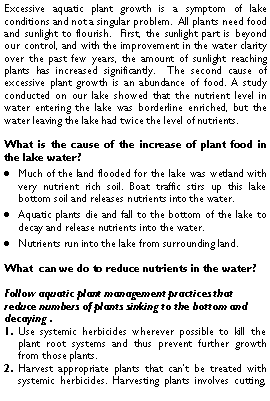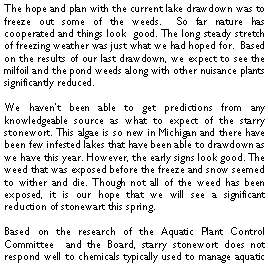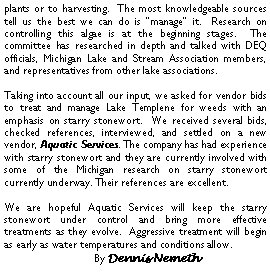In this issue: |






|
Winter Issue |
|
Lake Templene News Lake Templene Property Owners Association www.laketemplene.org |
Implement a dredging program that removes nutrient rich bottom soil. Besides dredging in shallow areas, also focus on high boat traffic areas which were wetlands before the lake was formed.
Maintain watershed management requirements that significantly reduce the nutrients entering from surrounding land.
The LTPOA can provide a recommended lawn treatment program. The details of this program will be in the next newsletter and displayed on the website. By Jack Rote |
|
2011 |
|
Aquatic Plant Growth Message
Aquatic Plant Management 2011 2011 |
1
1 |
|
Announcements: Event Dates
Dinner Dance Photos |
2
2 |
|
Shoreline Service
Best Picture
Directory Update Request
Website |
3
3
3
3 |
|
Nottawa Bridge Launch Site
Treasurer’s Message
Floating Plant Gathering Service
|
4
4
4 |
|
Bald Eagles on Lake Templene |
5 |
|
|
|
|
|
|

|
Newsletter Editor: Dolly Padgurskis
Newsletter Staff: Susan Leist Sandy Rote Leslie Van Gelder
|

